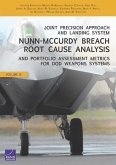Most Air Force precision-guided weapons (PGWs) require the assistance of an operator to reach their targets. Autonomous PGWs, now being developed, require substantial intelligence data to support mission planning and employment and to achieve high delivery accuracy. The authors of this report examined the support requirements for two categories of PGWs: those with target-imaging sensors and those that rely on an inertial navigation system aided by the global positioning system. They found that the latter require much less information about their targets than the former, but need much more precise absolute coordinates for their targets. These can be readily provided by trained intelligence personnel from existing data. The use of PGWs with target-imaging sensors is hindered by a lack of definitive specifications for target data to support terminal-area planning and a lack of a methodology for validating terminal-area products. Central intelligence-support and mission-planning organizations can currently supply these and, as resources allow, could transfer these capabilities to wing operations centers.








